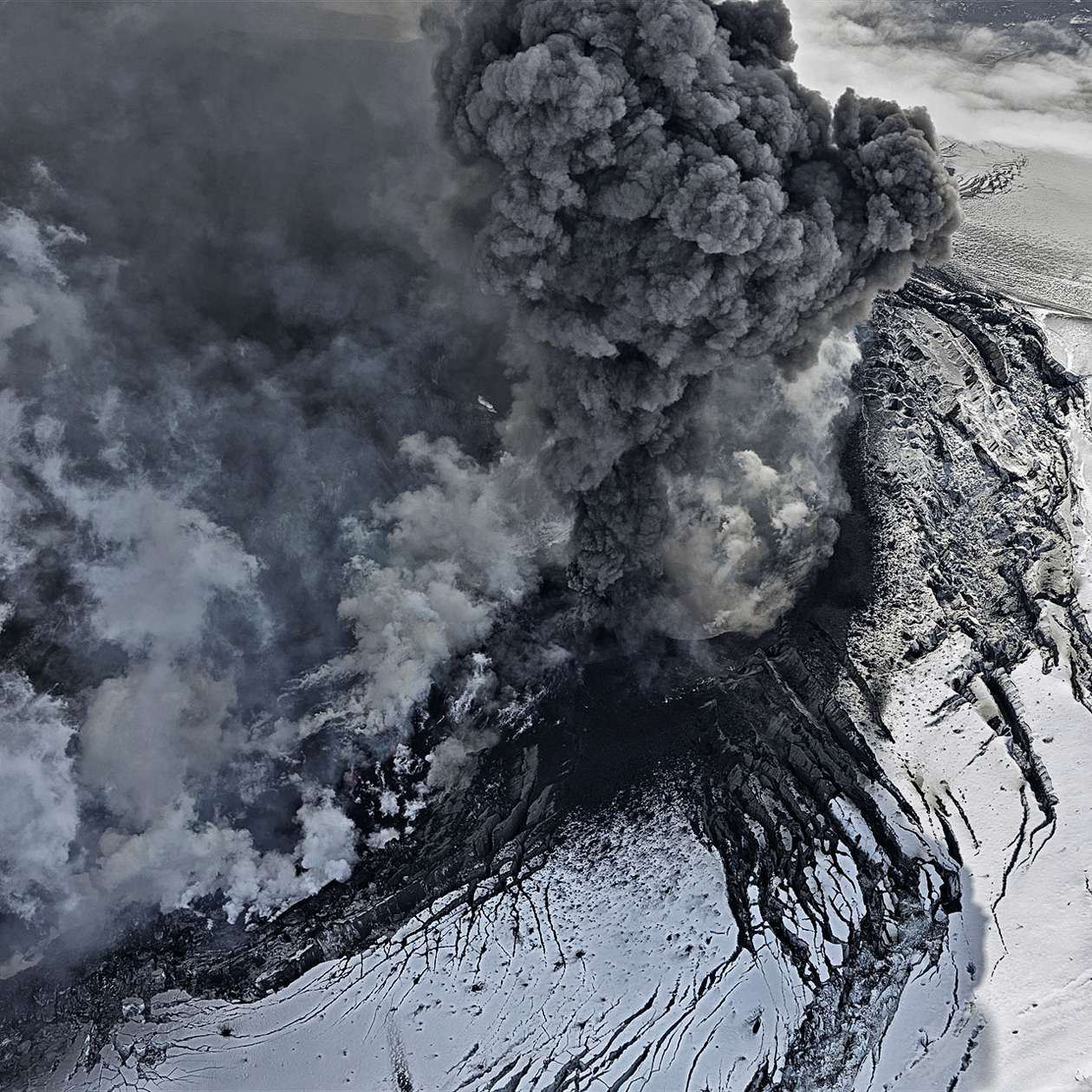
Earth´s Fireworks
Today more than half a billion people, about a tenth of the world´s population, live in areas affected by active volcanoes. There are more than 1400 on the continents and countless numbers on the oceans´ floors. Every year 20 to 30 of these active volcanoes erupt. Then fountains of glowing magma shoot out of their craters, the lava flows in streams down the volcanos` flanks and clouds of volcanic ash, caustic gases and vapour darken the sky.
Where does this untamable force inside our planet come from, a force that catapults fountains of lava and clouds of ash into the sky?
In order to erupt, volcanoes, many kilometers deep down in the earth with extreme temperatures of more than 1000 degrees Celsius and under enormous pressure, need a magma reservoir, an area of molten rock. These reservoirs can be many cubic kilometers in size. Scientists can only chart and measure these areas mostly with the help of seismic waves. But no one can tell exactly what these reservoirs look like. Ideas range from a gigantic cave filled with magma, a so-called magma chamber, to an area of hot rock deep in the earth´s crust or mantle in whose pores, cracks and fissures the magma circulates and collects under certain conditions.
What we do know: as the magma is less dense and lighter than the surrounding solid rock, it rises slowly through cavities in the earth´s crust or mantle. Increasing pressure in the reservoir can amplify this effect.

Another contributing factor to volcanic eruptions are the gases dissolved in the magma - for example, sulfur, carbon dioxide and also water vapor. They can be suddenly released as soon as the magma nears the earth´s surface when the surrounding pressure drops abruptly. As a result the magma shoots out of the volcanic vent causing an explosion. Red glowing chunks of lava fly through the air.
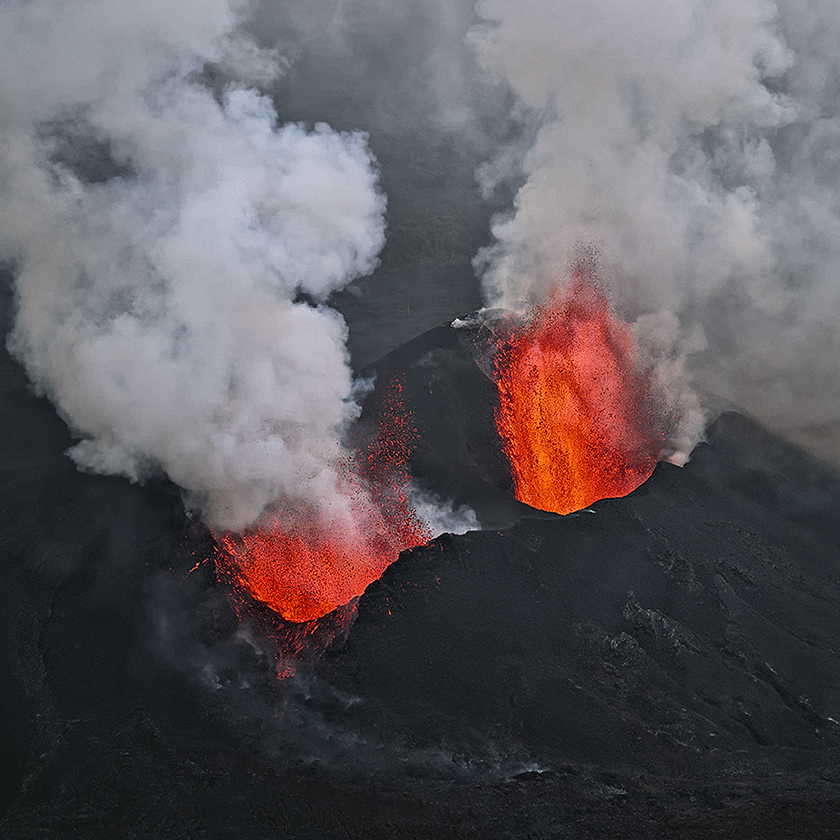
If the magma contains a great amount of gas the lava gets pulverized into the finest particles which cool immediately to form volcanic ash which rises in gigantic clouds in the atmosphere.
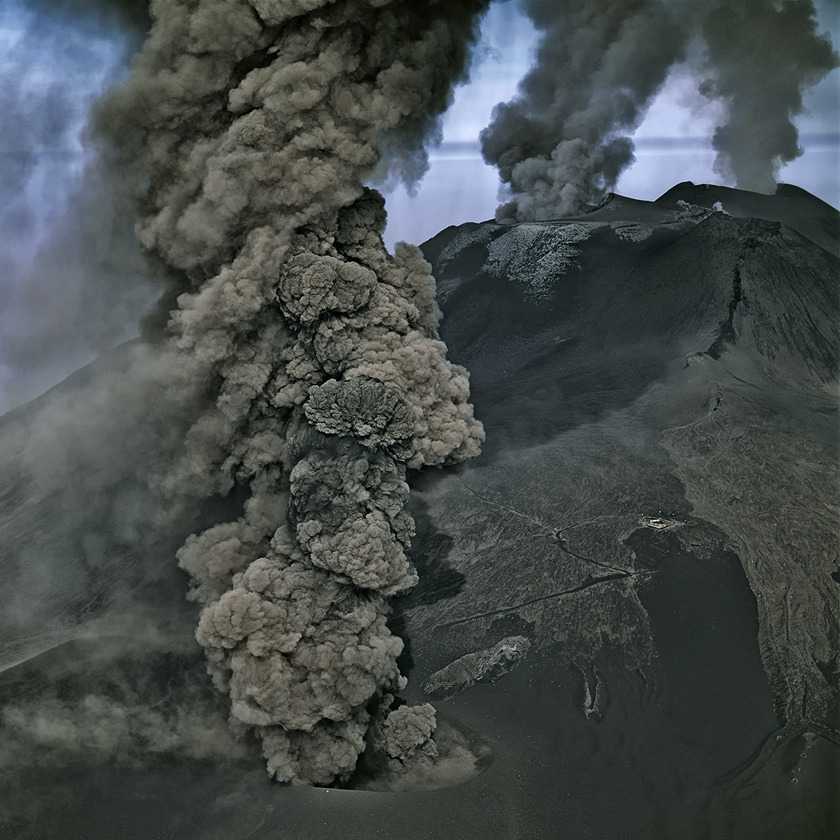
Volcanic eruptions leave characteristic marks on the earth´s surface. Apart from the cooled down lava streams there are particularly impressive crater holes which are blasted into the ground below by the explosions.
-

The four summit rings on Etna in winter 1998 ... -
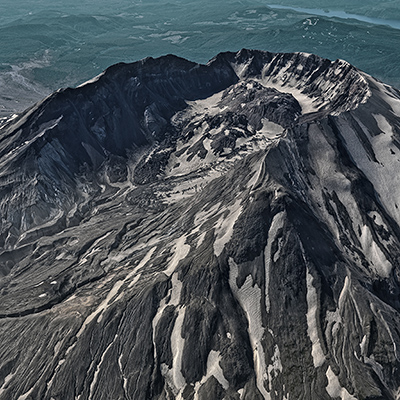
…. and the Mt. St. Helens in Washington state, USA.
With particularly violent eruptions like on Mt. St. Helens in May 1980 even a whole mountain peak can be blown up into the air. During a nine-hour eruption the volcano had lost 400 meters in height.
Even long after an eruption plumes of gas can pour out of the crater walls, a sure sign that the volcano is only resting and is not extinct. The gases are mostly very hot and caustic. Where sulfur compounds are deposited glowing yellow crusts appear.
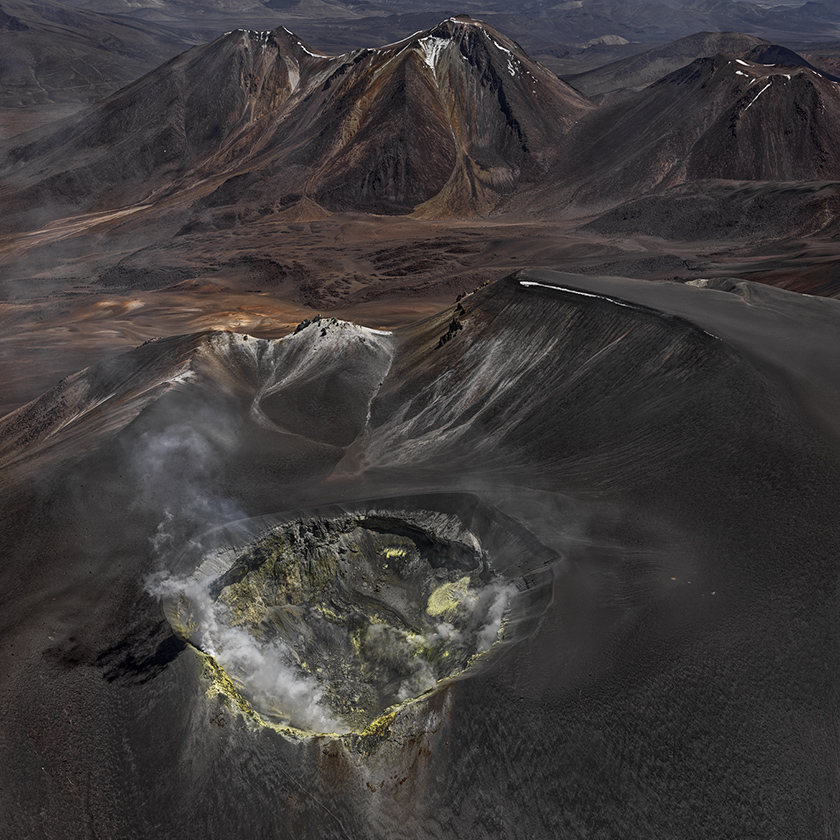
From the earth´s core, in addition to sulfur, the gases also release chlorine, fluoride and ammonia as well as various metal compounds into the atmosphere. They are so caustic that they can break down the walls of a crater. What was once solid rock becomes a fine, slimy clay.
This clay then clogs up cracks and crevices in the rock and in this way seals off the base of the crater where rain water can collect. A crater lake develops. But this is not suitable for swimming in as caustic gases are still often released on the bottom of the lake, thereby transforming the water into a strong acid.

In particular the volcanoes in Costa Rica in Central America are both famous and infamous for the acid lakes in their craters.
The active crater of the Poás volcano is 1300 meters wide and 300 meters deep. In its centre it has one of the most acidic lakes on earth with a pH-value of almost zero in the intensive green water. The acidic vapors from the crater and its lake cause damage to vegetation as far as 10 kilometers away.
The Rincon de la Vieja volcano has a diameter of 500 meters. When it erupts the caustic water flows from the lake down the steep slopes in enormous streams of mud towards the villages and plantations at the foot of the fiery mountain.
-
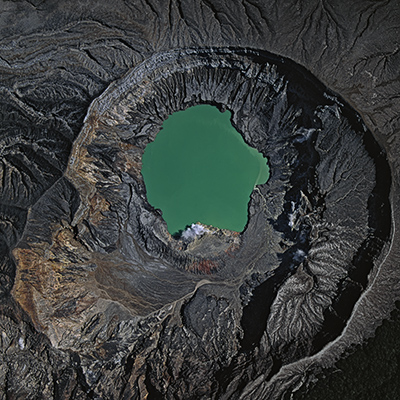
Acid lake in the Poás crater .... -

... and Rincon de la Vieja in Costa Rica.
When magma finds its way along a kilometer-long crevice to the surface of the earth it can lead to fissure eruptions. They create spectacular rows of craters as here on Lanzarote. The Mantagnas del Fuego in the Timanfya National Park date from an eruption in 1730.

If after a phase of eruptions a volcano has a longer dormant period, fertile soil can develop on the volcanic rock which is rich in minerals. This happens especially in wetter climatic zones and given the right conditions even in the desert.
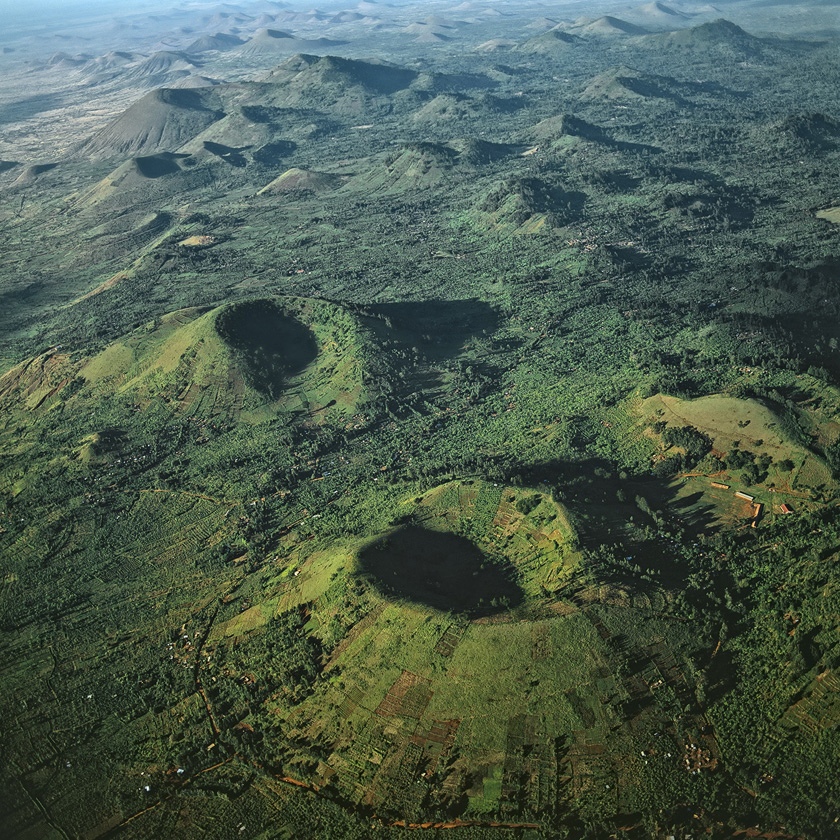
Farming is also carried out in the Chalbi desert in the north of Kenya. There are more than 200 craters on the flat slopes of the Marsabit volcano which rises almost 1000 meters above the desert like a green island. The mighty volcano is located on the outmost edge of the East African Rift which extends over 600 kilometers from the Red Sea to Mozambique. The small cones on its back date from about 500,000 years ago when after a longer dormant period it started to spew lava and ash again. The magma was able to break through the slopes of the old burning mountain in many places.
The volcanic rock is like a sponge. It stores the water from the short rainfalls in the dry north of Kenya, making it possible for people there to farm.


No comments